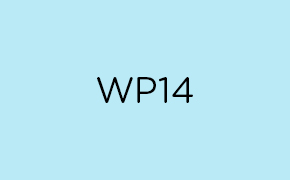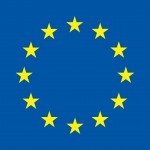Objectives:
The overall aim of this WP is to develop, through the HEALS environment and health associations approach, methods, protocols and an information base for converting information on joint exposures to particulate matter (PM) and allergens into quantitative estimates of their effects on allergy and asthma. Specific objectives are to:
- assess the relationships between joint exposure to indoor/outdoor PM and selected aero- allergens (i.e. pollen, mould) and biological (endotoxin) and the prevalence and severity of allergy and asthma at the population level in Europe;
- investigate the joint impact of the PM and aero- allergens exposure on asthma and allergies using objective measurements of the health effects like respiratory function, bronchial hyper-reactivity, markers of airways inflammation (fraction of exhaled nitric oxide), allergic sensitization (IgE).
Description of work and role of partners:
The main objective of WP12 is to develop and operate the HEALS GeoDatabase platform (publicly available), which will systematically support the collection of and access to all datasets collected/developed for HEALS environment-wide association studies. The platform will enable users to manage and explore spatial data (when applicable), to process these data and to effectively visualize the results of spatially resolved models. It will be linked to a number of external database modules to access datasets including environmental as well as molecular biology/biochemistry and clinical data to support the performance of Environment-Wide Association Studies on the populations studied in Stream 5. It will also be linked towards Biomonitoring/omics/PBPK/Bioinformatics data infrastructures developed in stream 2. The HEALS database platform will effectively support the HEALS methodology for the construction of the individual exposome and the derivation of environment-wide association studies linking human exposure to chemical and physical stressors over an individual’s lifetime and observed health outcomes. It will be connected to the ToxHub database of the HEROIC project to support European data integration.
The following specific tasks have been identified:
Pre-existing twins data come from:
• Twins registries of Denmark, Finland, Italy, Netherlands, Norway, Sweden, UK as well as from Australia.
Population-based data derive from:
• Italy (a. about 3,000 subjects of a general sample living in Pisa (national founds); b. about 2,000 schoolchildren of the Italian CCM study founded by Italian Ministry of Health; c. about 500 adolescents in Sicily– RESPIRA projects founded by EU);
• France (a. 1,200 mother-baby pairs from the EDEN study; b. 1,000 adults subjects from the OQAI study; c. 470 from FERMA study; d. 7,242 schoolchildren from the 6 Cities Study; e. 2,100 elderly from the 3C study); f. 600 elderly from the DG-SANCO funded GERIE Study);
• UK (1,185 children from MAAS Study recruited prenatally between 1995-1997 followed up until age 11);
• Portugal (a. 2,943 adolescents from EPITeen study; b. about 7,000 mother-baby from Geração 21);
• Poland (1,700 mother-child from REPRO_PL);
• Spain (920 adults from CHIS2000).
Further, European-wide surveys will be considered: the SINPHONIE European study (about 5,000 schoolchildren and 1,000 teachers from 23 countries), the HESE European study (about 500 schoolchildren from 5 countries) and the GERIE European Study (500 elderly from 7 countries). These data will allow investigation of both outdoor and indoor interactions between PM and pollen, moulds, allergens and other biologicals. At the European level, outdoors data on the concentrations of both PM and pollen (sometimes also moulds (Alternaria)) are available in major cities or these concentrations can be easily measured or estimated when data gaps exist. In addition, WP14 will rely on objective assessments of indoor PM, allergens and biologicals through home and school campaigns, some of them performed in the frame of EU-funded projects (SINPHONIE, HESE).
Outcomes of exposure/health status available are:
a) exposure outcomes: PM concentration (background levels estimated through dispersion models (ADMS, STREET, OSPM) and in situ measurements), allergens and other biologicals concentration (pollen, mould, pet, dust, cockroach, endotoxin), sources of allergens exposure in house/classroom (i.e. reported visible moulds, cats and dogs) and sources of air pollutants exposure (measured distance from main roads, reported exposure to sources of air pollutants, reported environmental tobacco smoking);
b) questionnaire-based asthma and allergic rhinitis symptoms/diagnosis and medical visits, spirometry;
c) biomarkers: skin prick tests, IgE, bronchial hyper-responsiveness, markers of airways inflammation such as the fraction of exhaled nitric oxide (FeNO), micronuclei, sister chromatid exchanges, antibodies to DNA-adducts for benzo(a)pyrene, etc.;
d) other relevant information from questionnaires (age, sex, smoking habits). Individuals are exposed simultaneously to many air pollutants at once that are highly correlated with each other; thus, there is the need to consider environment-wide association studies. The HEALS methodology, integrating functionally bioinformatics, mechanistic and epidemiologic methods will be used to assess the effect of co-exposure to multiple pollutants taking multi-pollutant mixture into account.
The work can be decomposed in the following three tasks:
Task 14.1 Population-level association between exposure to indoor and outdoor PM and allergens and prevalence of asthma/allergic rhinitis (CNR, USTUTT, FMUP, KCL, NIPH, SDU, UPMC, AUTH)
At the population level, the semi-individual design will be applied to assess the relationship between the exposure to outdoor/indoor biologicals and PM (information sources and instrumental assessments) and asthma/allergic rhinitis prevalence and severity rates and their variations in populations (children, adults and general population) living in various European countries, accounting for potential confounders. More particularly, this investigation will identify the effect of interaction/synergy between PM and allergens on asthma and allergies. Spatial analysis and fusion of geo-referenced exposure data using geographic Information Systems (GIS) (including data from satellite-based remote sensing of the atmosphere) and spatial modelling (e.g. land-use regression models and mechanistic exposure models) will be also utilized in order to better characterize individual exposure. Several pre-existing cohorts and cross-sectional studies will contribute to this task as described above.
This task will include individuals from Italy (n=3,000 in Pisa, n=2,000 from the Italian CCM study, n=500 from RESPIRA), France (n= 1,200 from the EDEN study; n=7,242 from the 6 Cities Study, n=1,000 from the OQAI study; n=70 from FERMA study; n=2,100 from the 3C study); UK (n=1,185 children from the MAAS Study), Portugal (n=2,943 from EPITeen study, n= 7,000 mother-baby from Geração 21), Poland (1,700 mother-child from REPRO_PL), Spain (920 adults from CHIS2000) and from the European SINPHONIE (n=5,000 schoolchildren and n=1,000 teachers), the HESE European study (n=500 schoolchildren) and GERIE Studies (n=500).
Task 14.2 Biomarker and environmental marker analysis in selected samples (CNR, TNO, AUTH, UM, UPMC, KCL, SDU)
Specific biomarker and bioinformatics analyses will be conducted in the sub-samples of individuals for whom markers of allergic sensitisation, allergies and asthma are available.
This task will include individuals from Italy (n=3,000 in Pisa, n=220 children and n=130 adults from RESPIRA), France (n= 1,200 from the EDEN study with indoor PM sources; n=7,242 from the 6 Cities Study, n=1,000 from the OQAI study; n=70 from FERMA study; n=2,100 from the 3C study); UK (n=1,185 children from the MAAS Study), Portugal (n=2,943 from EPITeen study, n= 7,000 mother-baby from Geração 21), Poland (1,700 mother-child from REPRO_PL), Spain (920 adults from CHIS2000) and from the SINPHONIE European study (n=1,000 schoolchildren), the HESE European study (n=500 schoolchildren) and the GERIE European Study (n=500).
Task 14.3 Refinement of HEALS methodology to estimate the association of exposure to multi-pollutant mixtures and to allergens in the air (UPMC, AUTH, CNR, USTUTT, UM, TNO, FMUP, KCL)
The HEALS methodology will be refined to estimate the association between exposure to multi-pollutant mixtures and to allergens and adverse health outcomes making use of individual exposome data and the marker analysis from Task 14.2.


